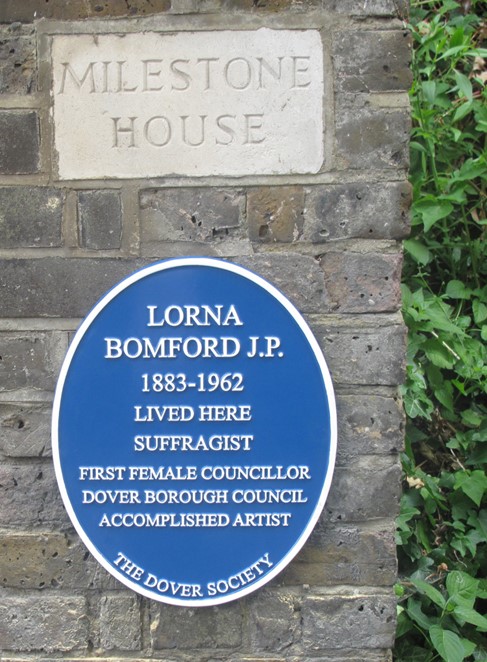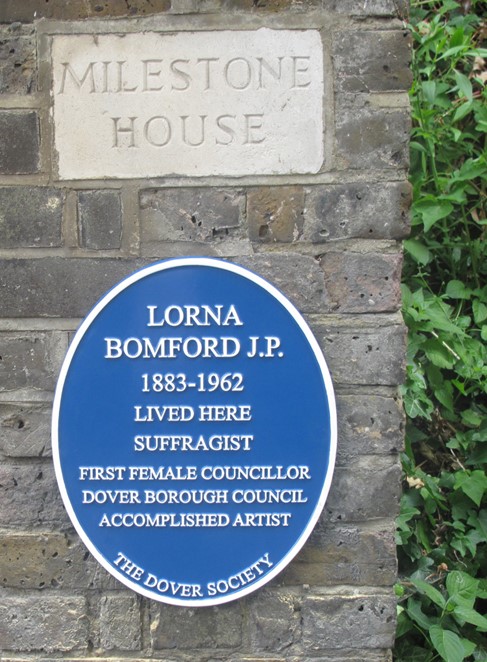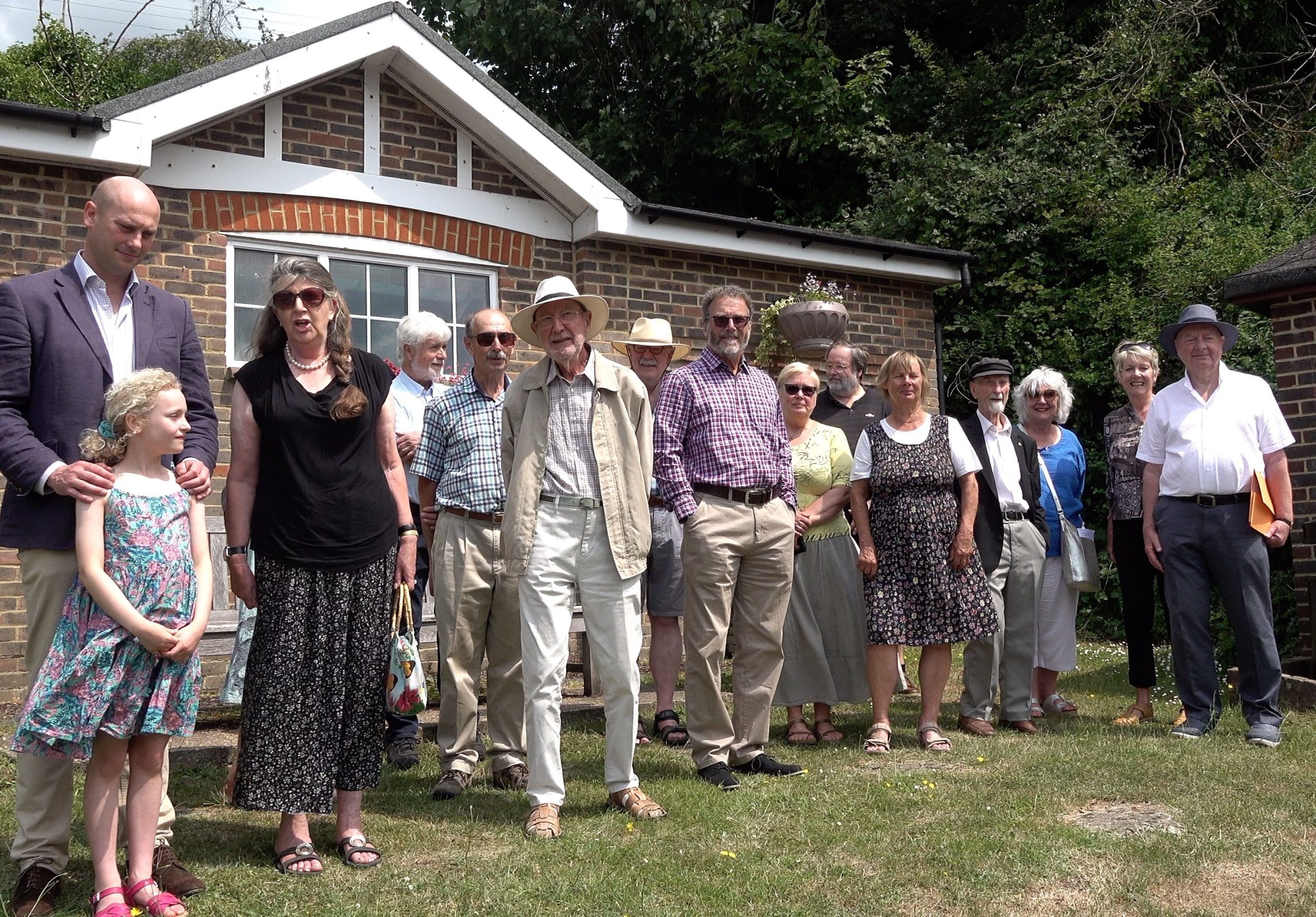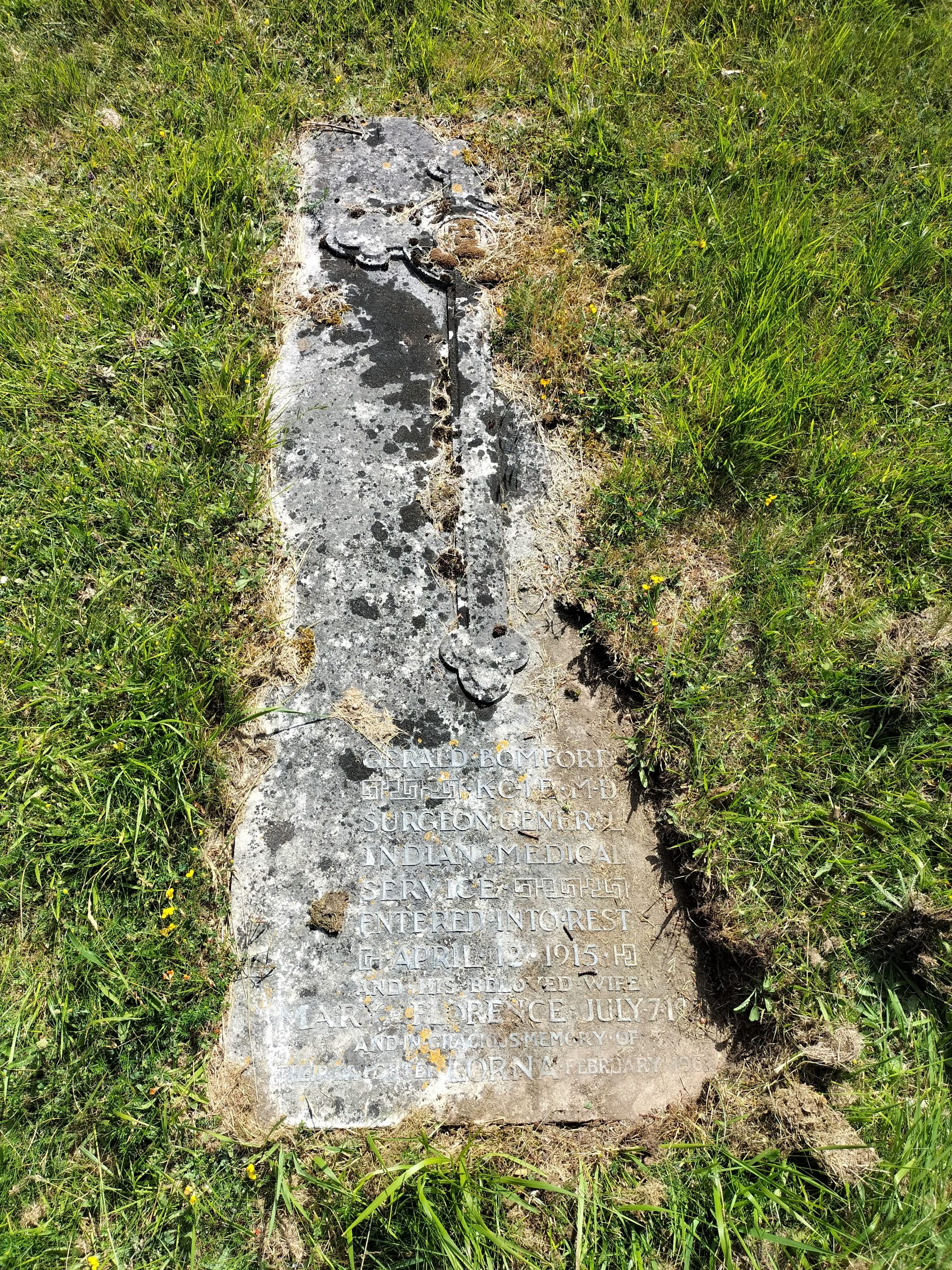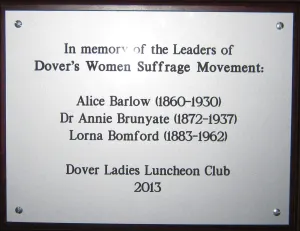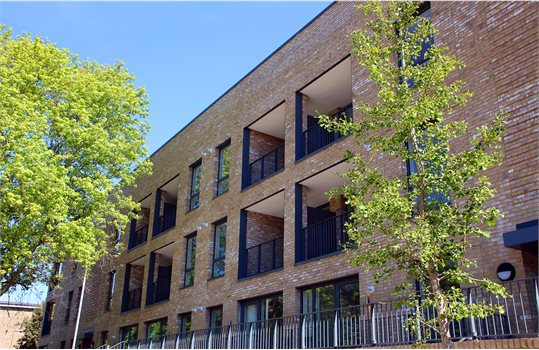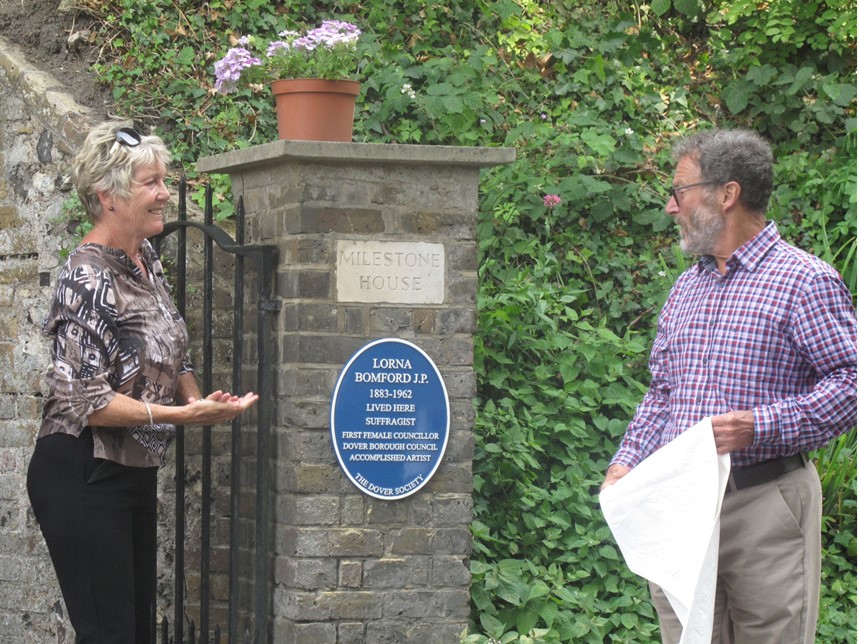Latest Dover Society Plaque Unveiled
Milestone House, Temple Ewell, Dover
Reported by Alan Lee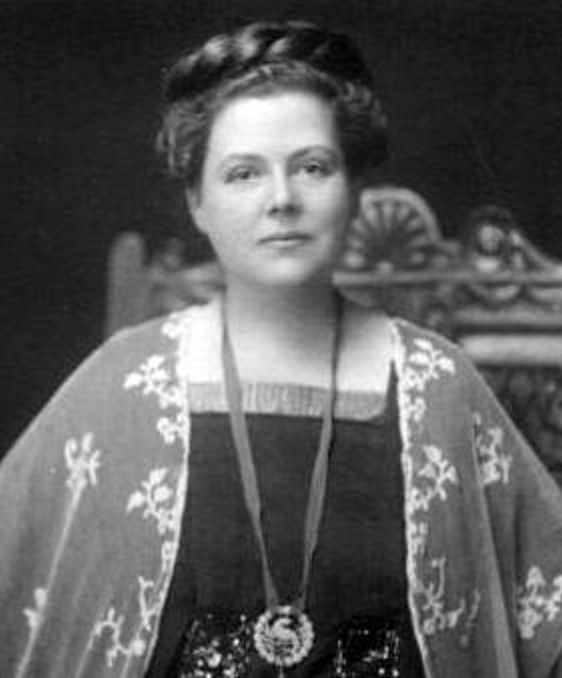
At 2pm on Monday 26th June 2023 a small group of people gathered, including three members of the family, just down the road from Milestone House. They were there to witness the unveiling of the latest Dover Society plaque. Our Chairman Jenny Olpin said a few words of introduction and then handed over to Martyn Webster, the organizer of the plaque.
Martyn briefly outlined Lorna Bomford’s life and the reasons why she deserved to be publicly recognised.
Lorna Bomford was born on 29th December 1883 in Calcutta, India and baptised there on 23rd March 1884. Her father Sir Gerald Bomford, an army surgeon, was then Director General of the Indian Medical Service until retirement in 1910. The family came to settle thereafter in Dover as did many British military people returning from India at that time. As a family they first lived for some years at 13 Park Avenue which later became a hotel and is now divided into flats. After the death of her mother in 1939 Lorna moved immediately post second war to Milestone House, Temple Ewell.
She worked in the Food Rationing Office in Dover during both World Wars. From 1919 to 1921 she was the first female Councillor of the Borough of Dover and became actively concerned with early Council Estate buildings. From 1927 to 1945 she was a Justice of the Peace. Much of her spare time was devoted to painting in oils and pastel, and she exhibited in the Paris Salon. Lorna was an active local suffragist before women were given the vote and she is commemorated as such with others on a brass plaque in the Maison Dieu. Remarkably she was also one of the survivors of the 1917 Dover tram crash on Crabble Hill in which 11 people were killed and 60 injured. She died unmarried on 25th February 1962 aged 79 years at her home, Milestone House, and was buried in the grave of her parents at Charlton cemetery where their memorial inscriptions may be still read today.
Lorna Bomford has already been honoured twice in Dover.
As well as the Maison Dieu plaque above, Dover District Council (DDC) has honoured an unsung hero of women’s rights with the naming of 24 brand new council homes in Dover as part of its largest housing development in a generation.
The £12.5m redevelopment of the former brownfield site provides 65 new homes with a mix of tenures, including social housing for affordable rent, shared ownership, and private sale.
The social housing element comprises 18 two-bedroom apartments, and six one-bedroom apartments in a three-storey building on Harold Street. The properties will be occupied by local people on the Council’s housing waiting list.
The building has been named Bomford Place in honour of Lorna Bomford (1883-1962), a leading light in Dover’s Suffrage Movement.
This latest blue plaque by the Dover Society is therefore well merited and overdue. I commend it to you.
The group then moved along London Road, opposite Milestone House, to witness the unveiling of the plaque. Our chairman, Jenny Olpin, then invited Glenn Mousley, Chair of Temple Ewell Parish Council, to perform the unveiling.
We are immensely grateful to Carole and Chris, the house owners, to have agreed for this plaque, the eighteenth in the Dover Society’s series to be given its place of honour here. The group were then invited into the house for refreshments.
Milestone House is marked by a stone set in the wall below it, facing London Road. The building’s history is not altogether clear, but it must date from at least the seventeenth or eighteenth century with various additions over time. It was once known as Pembroke Villa and is believed to have served variously as a vicar’s house, a public house and in various other interesting guises and ownerships. Any further information about the building’s history would be welcomed not only by the present owners. but also, by the Dover Society for the local record.
This fine house stands on what was the main mail coach road to Canterbury, Rochester and London and must have witnessed the passing by of a multitude of royalty, personages and travellers making their way to and from the port of Dover. If only it could speak to us.


